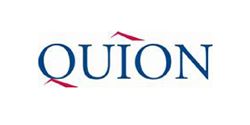Cursusbeschrijving
This three-day instructor-led course will teach IT Professionals, experienced with Microsoft Windows XP and Windows Vista in a Tier 2 support environment, how to support the operating system and solve technical troubleshooting problems in a Windows 7 and Windows Server 2008 R2 networking environment. This course also directly supports the EDST exam.
{tab Doelgroep}The primary audience for this course is the Enterprise Desktop Support Technician (EDST) providing Tier 2 support. The secondary audience for this course is the Desktop Support Technician (DST) in an Upper MORG Organization.
{tab Voorkennis}Om deel te nemen aan deze cursus moet de M6292 Installing & Configuring Windows 7 Client before you attend M6293 afgerond zijn
{tab Certificering}Na het afronden van deze Windows 7 cursus kunt u deelnemen aan het examen 70-685 Enterprise Desktop Support Technician.
{tab Overige informatie}This course will be delivered with digital courseware. In order to have the best learning experience you are asked to bring your own second screen to view the courseware. A second screen includes: tablets and laptops.
{/tabs} {slider Cursusinhoud|closed}Module 1: Resolving Startup Issues
This module describes how to identify and troubleshoot issues that affect the operating system’s ability to start, and how to identify problematic services that are running on the operating system. It also describes how to use the Microsoft Windows7 operating system advanced troubleshooting tools, collectively known as the Microsoft Windows Recovery Environment (WindowsRE).
After completing this module, students will be able to:
- Use Windows7 recovery tools to troubleshoot startup problems.
- Configure and troubleshoot startup settings.
- Troubleshoot operating system services.
Module 2: Using Group Policy to Centralize Configuration
This module explains how Group Policy works and how to identify when an organization is not applying Group Policy objects (GPOs) properly.After completing this module, students will be able to:
- Describe Group Policy application.
- Troubleshoot client configuration failures and GPO application issues.
Module 3: Resolving Issues for Hardware Devices and Device Drivers
This module explains how to troubleshoot hardware failures, and details physical hardware failures and those of drivers for hardware devices.
After completing this module, students will be able to:
- Identify basic issues with hardware.
- Determine problems relating to hardware failures.
- Determine problems that device drivers cause.
Module 4: Resolving Network Connectivity Issues
This module explainshow to configure and troubleshootboth wired and wireless network connections.
After completing this module, students will be able to:
- Determine the network configuration of client computers.
- Troubleshoot network connections.
Module 5: Resolving Remote Connectivity Issues
This module explainshow to configure and troubleshoot technologies that enable remote users to connect toan organization’s network infrastructure. These technologies can include virtual private networks (VPNs), Network Access Protection (NAP), and Windows 7 DirectAccess.
After completing this module, students will be able to:
- Configure and troubleshoot VPN connections.
- Use Remote Desktop.
- Use Remote Assistance.
- Troubleshoot NAP issues.
- Troubleshoot DirectAccess issues.
Module 6: Resolving Issues with Logon and Resource Access
This module explains how to troubleshoot and resolve logon issues related to user profiles, file access, and printer access.After completing this module, students will be able to:
- Troubleshoot issues relating to user logons.
- Troubleshoot issues relating to user profiles.
- Troubleshoot issues relating to file access.
- Troubleshoot issues relating to printer access.
Module 7: Resolving Issues Related to Security
This module explains how to work with the wide range of security features that Microsoft Windows 7 uses to secure data, including both Encrypting File System (EFS) and BitLocker, as well as security configuration options included with Internet Explorer, and using file permissions tolimit file access, usually on file servers.
After completing this module, students will be able to:
- Recover files encrypted by EFS.
- Recover drives encrypted by BitLocker.
- Troubleshoot issues with Internet Explorer and content access.
- Troubleshoot issues with file permissions.
Module 8: Resolving Issues Related to Operating Systems and Applications
This module explains how to support the installation and operations of applications. It also addresses how to ensure that applications continue to function correctly and prevent security issues by applying updates in a timely way.After completing this module, students will be able to:
- Troubleshoot issues with application installation.
- Troubleshoot issues with application operations.
- Apply application and Microsoft Windows updates.
Module 9: Resolving Performance-Related Issues
This module explains how to conduct proactive monitoring of your Microsoft Windows 7 computers to avoid performance-related problems. It also covers supporting users by optimizing Windows 7, and how to collect and interpret data that pertains to performance characteristics.After completing this module, students will be able to:
- Configure performance options in Windows 7.
- Monitor reliability and performance of Windows 7 computers.
- Use Event Viewer to identify and help resolve problems with Windows7 computers.
Module 10: Appendix A: Implementing a Troubleshooting Methodology
This supplementary material / optional Module covers theresponsibilities of an enterprise desktop support technician (EDST), the benefits of developing a troubleshooting methodology, and the benefits of following the procedures laid down in that methodology.After completing this module, students will be able to:
- Describe the job role of the EDST.
- Describe the steps of a typical troubleshooting methodology.
After completing this course, students will be able to troubleshoot:
- Startup issues on a computer with Windows 7 installed.
- Issues related to the application of Group Policy.
- Issues related to hardware devices and device drivers.
- Issues related to network connectivity.
- Remote connectivity issues.
- User profile and logon script issues.
- Issues related to security systems such as Encrypting File Systems (EFS), BitLocker, and file permissions.
- Issues related to operating system features and applications.
- Issues related to performance.
Excel Training Volgen?
Benieuwd naar de mogelijkheden van een Excel training? Vraag vrijblijvend meer informatie aan en we sturen je binnen 24 uur meer informatie op!


























